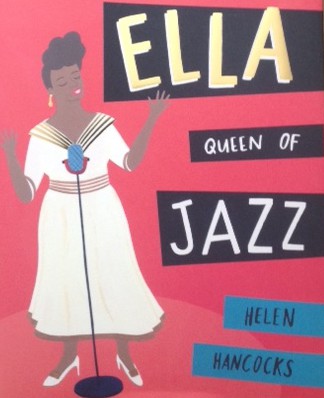Inspiring Young Readers
 posted on 02 Jul 2017
posted on 02 Jul 2017
Ella, Queen of Jazz by Helen Hancocks
How did the friendship begin between two great artists – the brilliant jazz singer Ella Fitzgerald and the film star Marilyn Monroe? US illustrators and their publishers do these picture book biographies very well – we always try to pick them up when we’re in America - and so it’s delightful to find such a fabulous example done by a British artist.

This is not Helen Hancocks first book but I have to be honest and say that I’ve somehow missed seeing her work before we spotted this one in our local Waterstones. She graduated with a degree in animation and illustration from Manchester School of Art in 2011 and in 2013 her debut book – Penguin In Peril – was the UK’s biggest selling debut picture book. She’s since followed that with three others and now Ella, Queen of Jazz. I can’t tell you much more about her – her own website simply describes her as an illustrator, cake eater, and film watcher – but clearly a long and sparkling career awaits.

In this book the drawings really do all the work and written exposition is kept to an absolute minimum but the story of how Marilyn Monroe was instrumental in Ella Fitzgerald’s rise to fame is nicely done. Of course, the unspoken issue that looms over the whole episode of Ella’s ban from the most prestigious clubs and nightspots is the racism that was ever-present in America at this time. Hancocks doesn’t handle this crudely but she makes it explicit and matter of fact without underplaying the devastating effect this could have on artists who the white music establishment were happy to have as invisible recording stars but were not happy to see perform live. It took the brave intervention of someone with Monroe’s status to break the log-jam and the regard they built for each other developed from that point onwards.

Hancocks’ art work is beautifully naïve and has something of a vintage feel about it – you wouldn’t be surprised to find her style decorating brochures and advertising from the 1950s. Her use of colour is clean and refreshing and her two dimensional depiction of the human figures is artfully more skilful than at first appears.

Although this is ostensibly a ‘picture book’ for children and younger readers – a useful brief biography of the two stars is tucked in at the end for those who haven’t encountered them before – I think this book should appeal to plenty of adults too.
I don’t see why children should have all the fun – do you?
Terry Potter
July 2017

